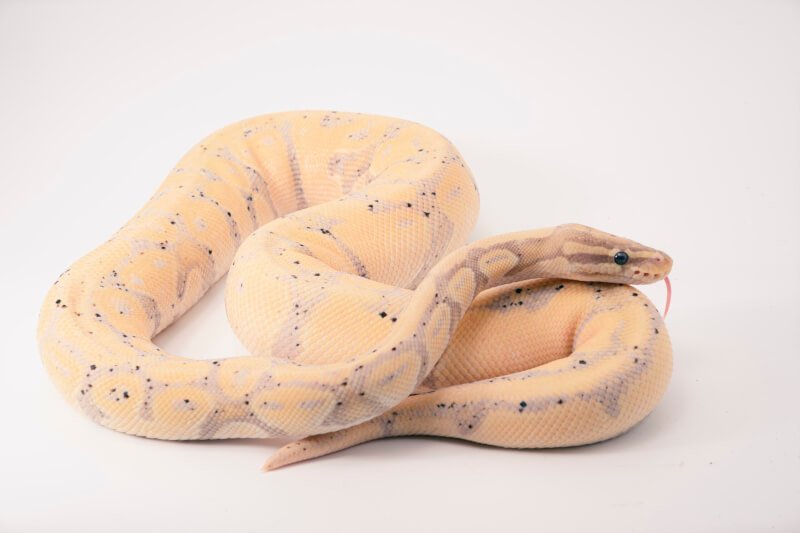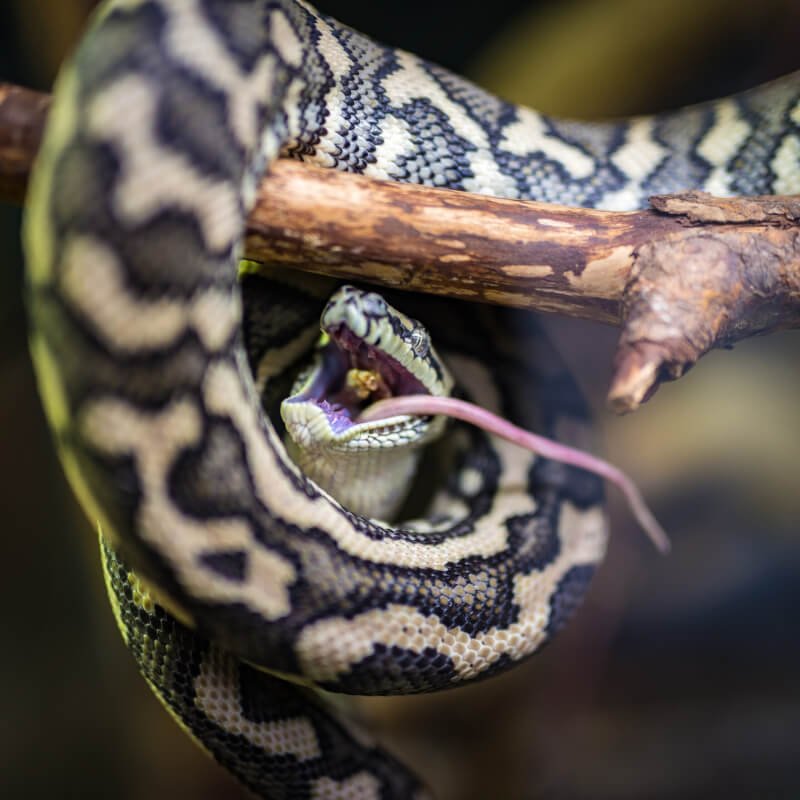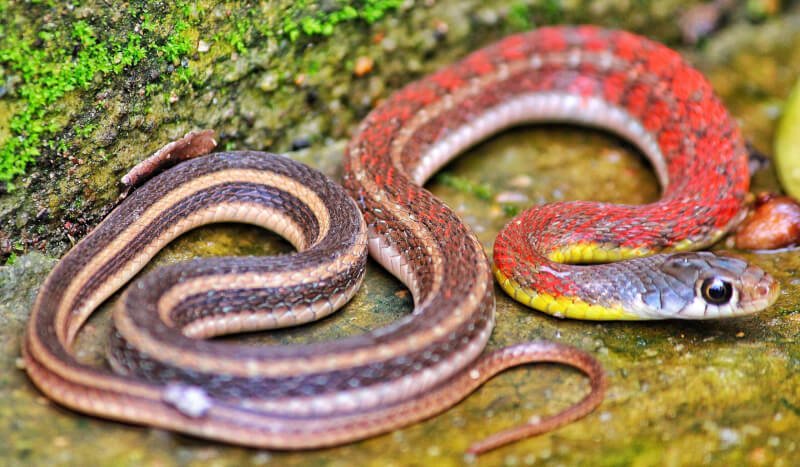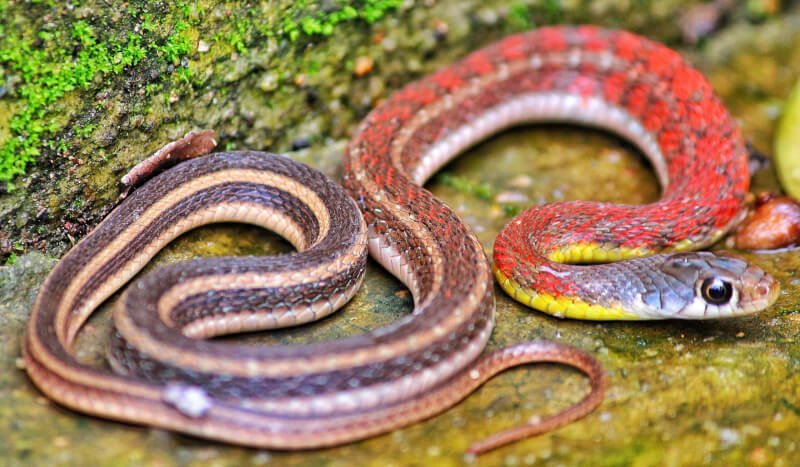Let’s unravel the mystery behind the unsettling condition afflicting snakes – mouth rot. A perplexing ailment affecting our slithering friends, mouth rot has puzzled many snake enthusiasts. But fear not, for in this article, we will uncover the root causes of this affliction and shed light on the factors that contribute to its occurrence. So, grab your curiosity and join us on this fascinating journey into the world of snake health as we uncover what causes mouth rot in these fascinating creatures.

Causes of Mouth Rot in Snakes
Mouth rot, also known as infectious stomatitis or oral ulcers, is a common health issue in snakes that can have serious consequences if left untreated. There are several factors that can contribute to the development of mouth rot in snakes, ranging from bacterial infections to genetic factors. By understanding the causes of mouth rot, snake owners can take proactive steps to prevent and treat this condition. In this article, we will explore the various causes of mouth rot in snakes and provide valuable insights on how to address and mitigate these issues.
Bacterial Infections
Introduction to Bacterial Infections
Bacterial infections are one of the primary causes of mouth rot in snakes. These infections occur when harmful bacteria enter the snake’s mouth, often through an oral injury or compromised immune system. The bacteria then multiply, leading to inflammation, oral ulcers, and other symptoms associated with mouth rot.
Common Bacterial Agents
There are several bacterial agents that can contribute to the development of mouth rot in snakes. Some of the most common include Aeromonas hydrophila, Pseudomonas aeruginosa, and Klebsiella pneumoniae. These bacteria can thrive in the warm and moist environment of a snake’s mouth, especially if the snake’s immune system is weakened.
Transmission of Bacterial Infections
Bacterial infections can be transmitted to snakes through various means. Contaminated water, surfaces, or food can harbor harmful bacteria that can enter the snake’s mouth and lead to mouth rot. Additionally, injuries from rough handling or fighting with other snakes can create an entry point for bacteria. Poor hygienic practices, such as using dirty or contaminated tools, can also facilitate the transmission of bacterial infections.
Signs and Symptoms of Bacterial Infection
Recognizing the signs and symptoms of a bacterial infection in a snake’s mouth is crucial for early detection and treatment. Common indicators of bacterial infection include swollen and inflamed gums, redness, presence of pus, bad breath, loss of appetite, and decreased activity. Additionally, snakes may exhibit reluctance to eat, drooling, excessive salivation, and may develop mouth ulcers or lesions.
Prevention and Treatment
Preventing bacterial infections in snakes requires maintaining a clean and hygienic environment. Regularly disinfecting enclosures, using clean and sterile tools, and providing snakes with a balanced and nutritious diet can help reduce the risk of bacterial infections. If a snake does develop mouth rot due to bacterial infection, prompt veterinary care is essential. Treatment often involves antibiotics, wound cleaning, and supportive care to address the underlying infection and promote healing.

Poor Oral Hygiene
Importance of Oral Hygiene in Snakes
Maintaining good oral hygiene is essential for the overall health and well-being of snakes. Proper oral hygiene helps prevent the accumulation of bacteria, debris, and plaque in a snake’s mouth, reducing the risk of mouth rot and other oral health issues.
Causes of Poor Oral Hygiene
Poor oral hygiene in snakes can result from various factors. Inadequate enclosure maintenance, lack of routine oral cleaning, infrequent dental check-ups, and feeding on substrate or dirty surfaces can all contribute to the development of mouth rot. Additionally, using improper or abrasive substrates can irritate the snake’s mouth and lead to oral health problems.
Effects of Poor Oral Hygiene on Snakes
When a snake’s oral hygiene is neglected, harmful bacteria can proliferate, leading to mouth rot. The accumulation of debris and plaque can cause gum inflammation, oral ulcers, and infections. Poor oral hygiene can also result in discomfort, pain, and difficulty in eating, which can further compromise the snake’s overall health and well-being.
Preventing Poor Oral Hygiene
To prevent poor oral hygiene in snakes, regular oral cleaning should be incorporated into their routine care. This can be done by gently wiping the snake’s gums and teeth with a damp cloth or using a soft toothbrush specifically designed for reptiles. Additionally, providing clean drinking water, feeding snakes in clean bowls or specialized feeding containers, and ensuring proper enclosure hygiene are essential steps in maintaining good oral hygiene.
Inadequate Environmental Conditions
Role of Environmental Conditions in Mouth Rot
The environmental conditions in which snakes are kept play a significant role in their oral health. Inadequate temperature and humidity levels can contribute to the development of mouth rot by weakening the snake’s immune system and facilitating the growth of bacteria.
Temperature and Humidity Requirements
Snakes require specific temperature and humidity levels to thrive. Most snakes need a temperature gradient within their enclosure, ranging from a warm basking spot of around 85-90°F (29-32°C) to a cooler side of 75-80°F (24-27°C). Additionally, maintaining a humidity level between 50% and 60% is crucial for snake health, as it helps keep their skin and oral tissues hydrated.
Effect of Improper Temperature and Humidity on Snakes
When snakes are exposed to incorrect temperature and humidity levels, it can negatively impact their immune system, making them more susceptible to infections, including mouth rot. Low humidity can cause dehydration and dry out the snake’s mouth, leading to oral health issues. High humidity, on the other hand, can create excessive moisture, fostering bacterial growth and increasing the risk of mouth rot.
Preventing Mouth Rot due to Inadequate Environmental Conditions
To prevent mouth rot caused by inadequate environmental conditions, snake owners should ensure that their pets’ enclosures are properly heated and humidified. Using thermostats, heat lamps, ceramic heat emitters, and similar temperature control devices can help maintain the appropriate temperature gradient. Humidity can be regulated by using reptile-specific humidifiers, misting systems, or by providing a humid hide within the enclosure.

Stress and Weakened Immune System
Link Between Stress and Mouth Rot
Stress can have a profound impact on a snake’s overall health, including its oral health. Stress weakens the snake’s immune system, making it more susceptible to bacterial infections, such as mouth rot.
Factors Causing Stress in Snakes
There are several factors that can cause stress in snakes, leading to a weakened immune system and increased vulnerability to mouth rot. These may include improper handling, inadequate enclosure size, excessive noise or disturbance, abrupt environmental changes, and social isolation. Additionally, the presence of aggressive or dominant snakes in a shared enclosure can also induce stress.
Effects of Stress on Snakes’ Immune System
When snakes experience stress, their immune system becomes compromised. This compromise can lead to a reduced ability to fight off infections, making the snake more prone to developing mouth rot. Stress-induced hormonal changes can also suppress the immune response, further exacerbating the susceptibility to oral health problems.
Boosting Snakes’ Immune System
To minimize the risk of mouth rot due to stress and a weakened immune system, providing a suitable and stress-free environment for the snake is essential. This includes offering an adequately sized enclosure, providing appropriate hiding spots, and ensuring a consistent and predictable routine. Minimizing handling and avoiding stressful situations can also contribute to maintaining a healthy immune system in snakes.
Internal Parasites
Overview of Internal Parasites in Snakes
Internal parasites, such as worms or protozoa, can adversely affect a snake’s overall health, including its oral health. These parasites can be acquired through contaminated food sources, exposure to infected snakes, or from the environment.
Types of Internal Parasites
There are different types of internal parasites that can affect snakes, and each has the potential to contribute to the development of mouth rot. Intestinal worms, such as pinworms, roundworms, and tapeworms, can disrupt the snake’s digestive system and compromise its immune response. Additionally, protozoa, including cryptosporidium and spironucleus, can also infect a snake’s gastrointestinal tract and weaken its defenses against oral infections.
Impact of Internal Parasites on Snakes’ Overall Health
Internal parasites can significantly impact a snake’s overall health, making them more susceptible to mouth rot and other infections. These parasites can cause gastrointestinal inflammation, malnutrition, weight loss, and immune system suppression. By compromising the snake’s defense mechanisms, internal parasites create an optimal environment for the development of mouth rot.
Preventing and Treating Internal Parasites
To prevent internal parasites and mitigate the risk of mouth rot, it is crucial to maintain proper hygiene and quarantine procedures when introducing new snakes or food sources. Regular fecal examinations by a veterinarian can help identify internal parasites early on, allowing for timely treatment. Deworming medications specifically formulated for snakes may be prescribed to eliminate the parasites and reduce the risk of mouth rot.

Overcrowding
Understanding Overcrowding in Snakes
Overcrowding occurs when too many snakes are housed together in a confined space. This scenario can lead to increased stress levels, aggression, and the spread of diseases, including mouth rot.
Negative Effects of Overcrowding on Snakes
Overcrowding creates an unhealthy environment for snakes, both psychologically and physically. In overcrowded conditions, snakes may experience heightened stress levels, increased competition for resources such as food and hiding spots, and the potential for injuries or territorial disputes. Poor air circulation and increased humidity in overcrowded enclosures can also foster the growth of bacteria, exacerbating the risk of mouth rot.
Preventing Mouth Rot due to Overcrowding
To prevent mouth rot associated with overcrowding, it is essential to provide snakes with appropriate housing that allows for adequate space and individual territories. Enclosures should be large enough to accommodate the snakes comfortably, and their number should be kept within the recommended recommendations for each species. Additionally, maintaining proper hygienic practices, such as regular cleaning and disinfection of enclosures, can help minimize the risk of mouth rot due to overcrowding.
Injury or Trauma
Common Causes of Injury or Trauma in Snakes
Injuries and trauma can occur in snakes due to various reasons, including accidents, improper handling, or inter-snake aggression. These injuries can create open wounds, punctures, or lacerations, which can lead to the development of mouth rot.
Effects of Injury or Trauma on Snakes’ Oral Health
Oral injuries or trauma can compromise the integrity of a snake’s mouth and create entry points for bacteria. Snakes with damaged or wounded mouth tissues are highly susceptible to the development of mouth rot, as bacteria can easily invade and cause infection. Additionally, the pain and discomfort associated with injuries can further compromise the snake’s overall well-being.
Preventing Injuries and Trauma
Preventing injuries and trauma in snakes starts with providing a safe environment. Proper handling techniques, such as supporting the snake’s body and avoiding sudden movements, can help minimize the risk of accidental injuries. Enclosures should be free from sharp or abrasive objects that could potentially harm the snake. Additionally, ensuring compatibility among cohabiting snakes, proper feeding practices, and avoiding stressful situations can also reduce the likelihood of injury or trauma leading to mouth rot.
Unhealthy Diet
Impact of an Unhealthy Diet on Snakes
Diet plays a vital role in maintaining a snake’s overall health, including its oral health. An unhealthy or imbalanced diet can result in nutritional deficiencies, weakened immune system, and oral health issues, such as mouth rot.
Common Dietary Issues
Some common dietary issues that can contribute to the development of mouth rot in snakes include feeding an improper prey-to-snake size ratio, nutritional imbalances, feeding live prey, and providing inadequate supplementation. Feeding a diet lacking essential nutrients, vitamins, and minerals can weaken the snake’s immune system and increase its susceptibility to infections.
Maintaining a Balanced Diet
To prevent mouth rot due to an unhealthy diet, it is crucial to provide snakes with a nutritionally balanced diet that meets their specific dietary requirements. This includes ensuring the prey items are of appropriate size and species for the snake, offering a variety of prey items to promote a diverse nutrient intake, and providing any necessary dietary supplements, such as calcium or vitamins, as recommended by a herpetologist or veterinarian.
Preventing Mouth Rot Caused by an Unhealthy Diet
Preventing mouth rot caused by an unhealthy diet begins with understanding the nutritional needs of the snake species in question. Researching their natural diet and consulting with experts can help ensure a proper and balanced diet is provided. Regularly monitoring the snake’s body condition and consulting with a veterinarian can also help identify any dietary deficiencies early on and address them accordingly.
Co-infections
Interaction of Multiple Pathogens
Co-infections occur when multiple pathogens, such as bacteria, fungi, or parasites, infect an individual simultaneously. In the case of mouth rot in snakes, co-infections can exacerbate the severity of the condition and make treatment more challenging.
Impact of Co-infections on Mouth Rot
When co-infections are present in a snake with mouth rot, the interactions between various pathogens can intensify the symptoms and delay the healing process. Co-infections can cause a more severe inflammatory response, further compromising the snake’s oral health and overall well-being.
Prevention and Treatment of Co-infections
Preventing co-infections associated with mouth rot requires maintaining good hygiene and following appropriate preventive measures for each potential pathogen. Proper sanitation and disinfection procedures, regular veterinary check-ups, and adhering to recommended protocols for disease prevention can help reduce the risk of co-infections. If co-infections do occur, individualized treatment plans that specifically target each pathogen may be necessary for effective management.
In conclusion, mouth rot in snakes can be caused by a variety of factors, ranging from bacterial infections to inadequate environmental conditions. Recognizing and addressing these causes is crucial for preventing and treating mouth rot in snakes. By implementing proper hygiene practices, maintaining appropriate environmental conditions, providing a well-balanced diet, minimizing stress, and being vigilant about potential co-infections, snake owners can ensure the oral health and overall well-being of their beloved reptile companions. Remember, early detection and prompt veterinary care are essential in managing mouth rot and promoting the recovery of affected snakes.


